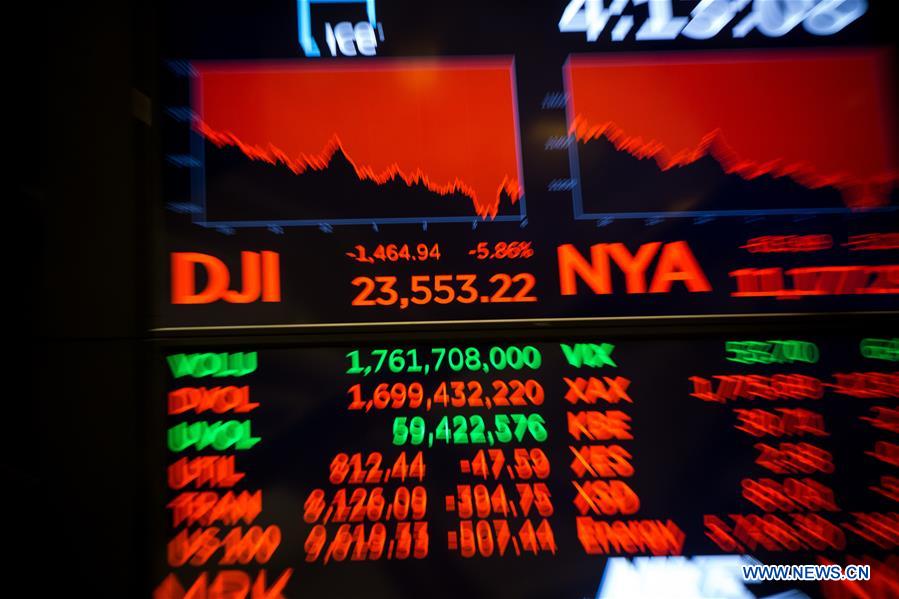
A screen shows trading data at the New York Stock Exchange (NYSE) in New York, the United States, on March 11, 2020. The Dow Jones Industrial Average sank 1,464.94 points, or 5.86 percent, to 23,553.22. The 30-stock index fell into a bear market territory, down more than 20 percent from last month's record close. The S&P 500 decreased 140.85 points, or 4.89 percent, to finish at 2,741.38. The Nasdaq Composite Index dipped 392.20 points, or 4.70 percent, to 7,952.05. (Photo by Michael Nagle/Xinhua)
NEW YORK, March 11 (Xinhua) -- Volatile trading continued on Wall Street Wednesday with the Dow closing down more than 1,400 points amid coronavirus fears.
The Dow Jones Industrial Average sank 1,464.94 points, or 5.86 percent, to 23,553.22. The 30-stock index fell into a bear market territory, down more than 20 percent from last month's record close.
The S&P 500 decreased 140.85 points, or 4.89 percent, to finish at 2,741.38. The Nasdaq Composite Index dipped 392.20 points, or 4.70 percent, to 7,952.05.
All the 11 primary S&P 500 sectors ended lower, with industrials falling 5.95 percent, the worst-performing group.
Fears that the continued spread of the coronavirus would slow economic growth rattled investors.
The World Health Organization (WHO) said on Wednesday that the COVID-19 outbreak can be characterized as a "pandemic" as the virus spreads increasingly worldwide.
The WHO is "deeply concerned both by the alarming levels of spread and severity, as well as by the alarming levels of inaction," said WHO Director-General Tedros Adhanom Ghebreyesus. He also urged the international community to take urgent and aggressive action to contain the pandemic.
The number of confirmed COVID-19 cases in the United States has topped 1,000.
U.S. President Donald Trump suggested Tuesday that he wanted the payroll tax rate to drop to zero through the end of the year. However, details of the policies remain uncertain.
The lack of a clear roadmap for Washington's proposed stimulus measures to mitigate the impact of the virus added to market jitters, experts noted.
On the data front, the Consumer Price Index (CPI) in the United States edged up 0.1 percent in February on a seasonally adjusted basis, the U.S. Bureau of Labor Statistics said on Wednesday.
The increase of the CPI, a measurement of inflation, followed a 0.1-percent growth in January, the report showed.